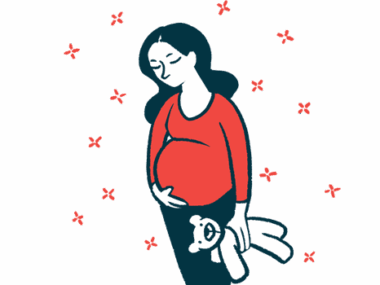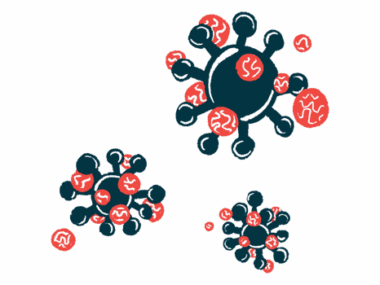IVF linked to higher rates of cholestasis pregnancy complication
Women using IVF nearly 3 times more likely to develop ICP: Study
Written by |

Women who conceive with the help of in vitro fertilization (IVF) — a commonly used assisted reproductive technology — are almost three times more likely to develop a complication known as intrahepatic cholestasis of pregnancy (ICP) than those who become pregnant spontaneously, according to the findings of a large study in China.
Fetal stress and worse newborn status were also more frequent among ICP patients after IVF than spontaneous conception, the data showed.
Given that ICP is thought to be linked to increases in certain pregnancy-related hormones, the observed higher risk of this liver disease with IVF may be due to a greater production of pregnancy hormones associated with IVF-related treatments, the researchers noted.
“These findings indicate that women who conceive via IVF are more likely to develop ICP than those who conceive spontaneously,” the team wrote.
The study, “Comparing risk factors and neonatal outcomes in women with intrahepatic cholestasis of pregnancy between assisted reproductive technology and spontaneous conception,” was published in the International Journal of Gynecology & Obstetrics.
Investigating real-word data from first-time pregnancies
ICP is the most common pregnancy-specific liver disease. It’s a type of cholestasis in which the flow of bile, a digestive fluid, from the liver into the intestines is impaired. As a result, bile acids build up in the liver, disrupting its function, and can leak into the bloodstream, leading to symptoms like severe itching.
The condition typically occurs during the third trimester of pregnancy, when there’s an increase in the production of pregnancy hormones, such as estrogen, that can affect bile flow.
Both the mother and the fetus can be affected, and ICP also increases the risk of pregnancy-related complications, including fetal distress, giving birth before 37 weeks of gestation, which is known as spontaneous preterm labor, and stillbirth.
Because infertility affects between 10% and 15% of the population, many couples seek help with assisted reproductive technologies. This includes IVF, a procedure in which mature eggs are collected from ovaries and fertilized by sperm in a lab, and the fertilized embryos are transferred to the uterus.
However, “there is a lack of research in large sample size comparing patients who conceived spontaneously with those who conceived via IVF in terms of the occurrence of ICP,” the researchers wrote.
To fill this knowledge gap, a team led by researchers at the Women and Children’s Hospital of Chongqing Medical University in China retrospectively analyzed real-world data from first-time pregnancies managed at a single Chinese center from 2016 to 2020.
Of the 32,803 first-time pregnancies identified, 28,336 (about 86%) were spontaneously conceived — and thus dubbed SC by researchers — while 4,467 (about 14%) were conceived via IVF. A total of 1,001 women in the SC group (3.53%) and 413 in the IVF group (9.25%) developed ICP, and their demographic and clinical data were compared.
Those who conceived via IVF were significantly older on average (31.05 vs. 28.31 years) and had a significantly higher body mass index (a ratio of height and weight; 26.37% vs. 5.47%) than those in the SC group.
The IVF group was also significantly more likely to have preterm births (26.37% vs. 5.47%) and twins (25.97% vs 1.08%), and to deliver by cesarean section (79.9% vs 40.24%).
ICP as a pregnancy complication was linked to 6 predictors
Statistical analyses adjusted for potential influencing factors indicated that women in the IVF group were twice as likely to develop ICP as a pregnancy complication than were those conceiving spontaneously. These women also were significantly more likely to have ICP in a pregnancy of a single baby, but not when delivering twins.
They also were significantly more likely, by 31%, to have severely high levels of bile acids in the blood.
Further, women with severe ovarian hyperstimulation syndrome, or OHSS, a potential complication of IVF marked by ovary swelling and leakage of fluid into the abdomen, had a twofold higher chance of developing ICP than those without.
Several markers for liver damage were also significantly higher in ICP patients following IVF relative to SC patients.
Moreover, for single-baby pregnancies, ICP after IVF was significantly linked to threefold higher rates of fetal distress (19.32% vs. 5.55%) and Apgar scores below 7, indicating potential breathing problems in the baby (13.44% vs. 3.87%). Stillbirths occurred solely in ICP women who underwent IVF after a single birth (0.84%) and twins (0.51%), specifically one case and three cases, respectively.
Additional adjusted statistical analyses identified six independent predictors of ICP: severe OHSS; single fertilized embryo transfer (ET) to the uterus; higher levels of estradiol, a type of estrogen hormone made by the ovaries, on ET day; earlier stage of embryo development at ET, fresh ET versus frozen ET, and higher body mass index.
We observed that the ICP rate of singleton delivery was higher in IVF than in SC [spontaneous conception], with a higher rate of [Apgar score below 7] and fetal distress in IVF than SC.
A statistical model including all these predictive factors was able to discriminate between women who developed ICP and those who did not with an accuracy of about 70%.
The use of high doses of IVF medications to increase levels of the pregnancy hormones estrogen and progesterone “is a possible explanation for the development of ICP in IVF,” the researchers wrote, adding that the “most widely accepted hypothesis is that elevated estrogen induces biliary sludging,” or the formation of a thick mixture of small solids derived from bile.
“We observed that the ICP rate of singleton delivery was higher in IVF than in SC, with a higher rate of [Apgar score below 7] and fetal distress in IVF than SC,” the team wrote. “A well-designed, multicenter … study is warranted to further validate our results.”








